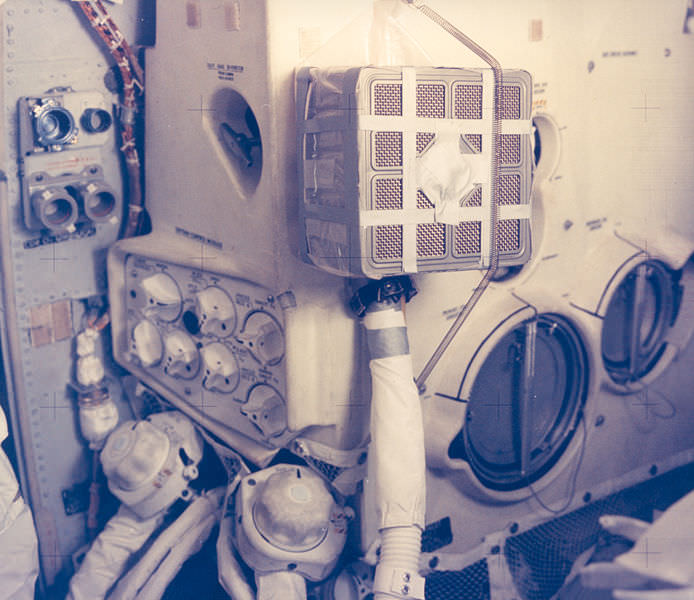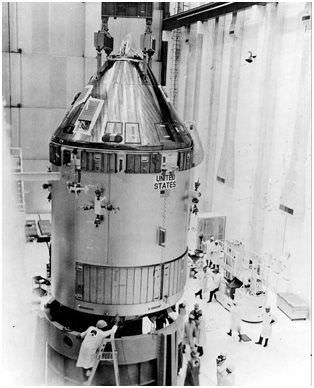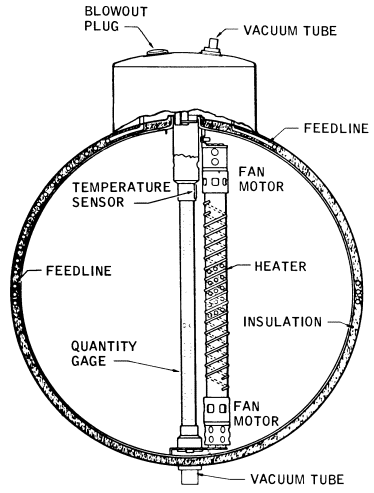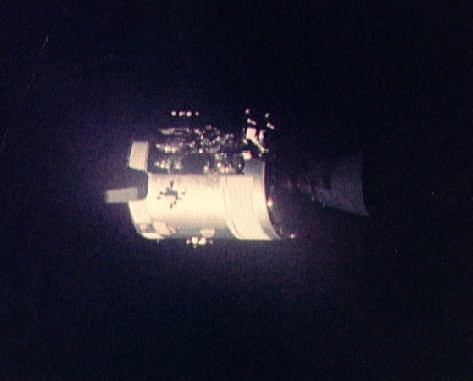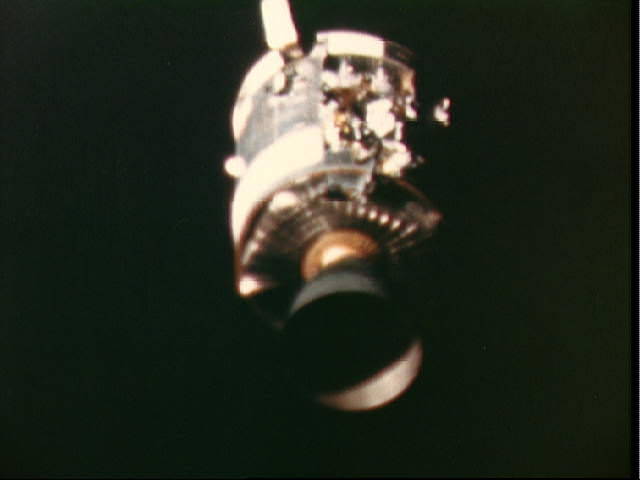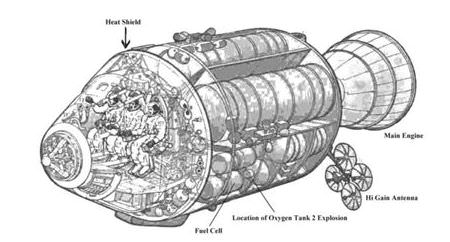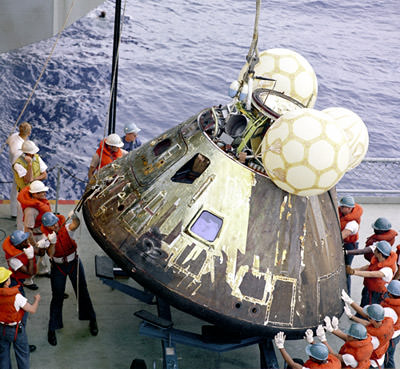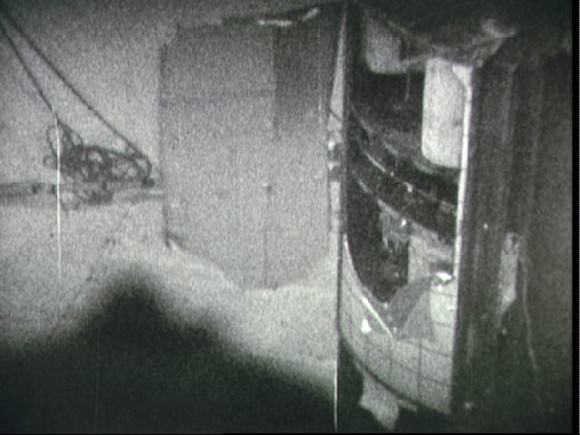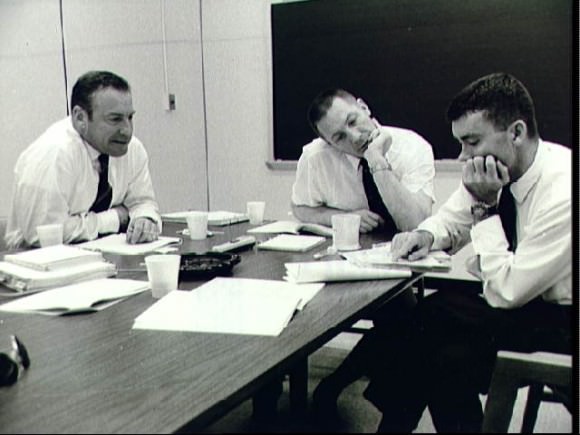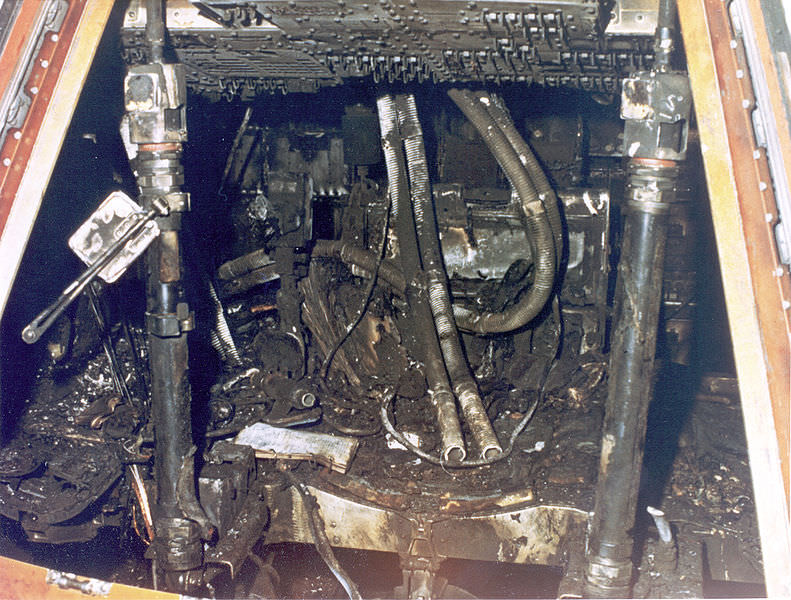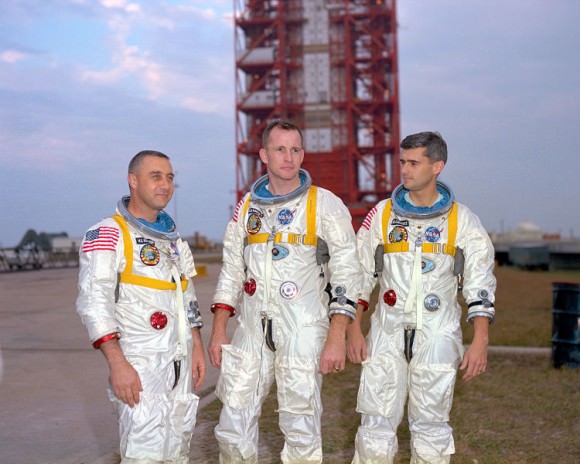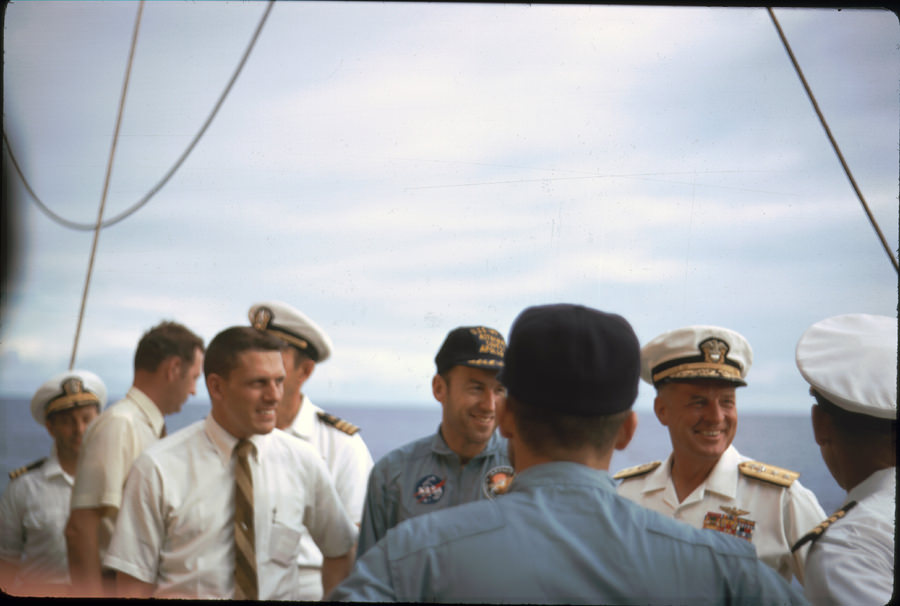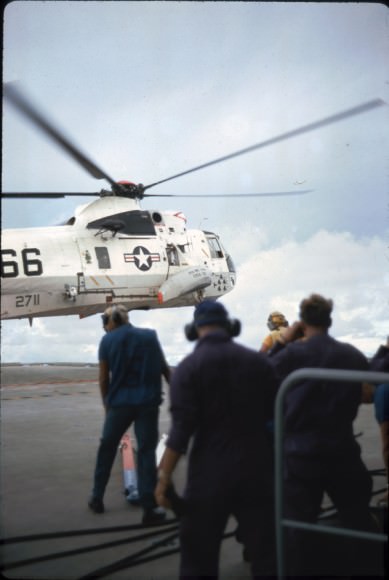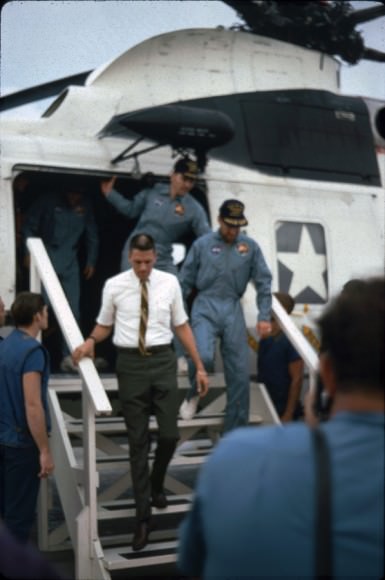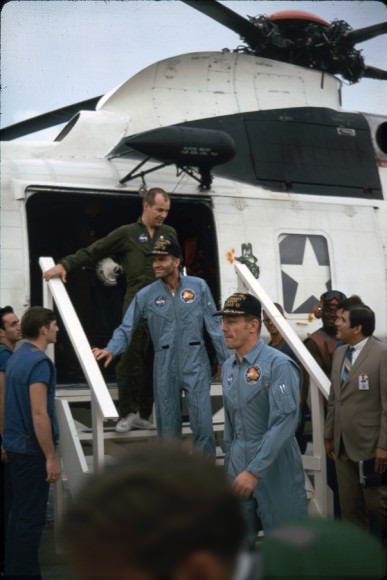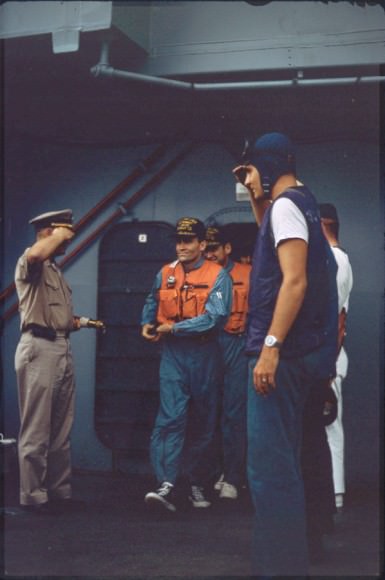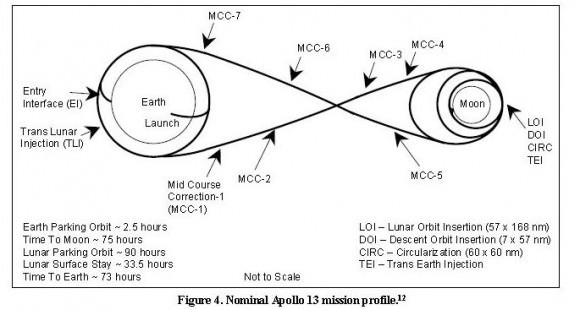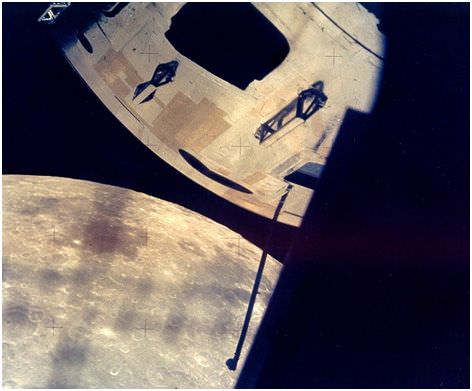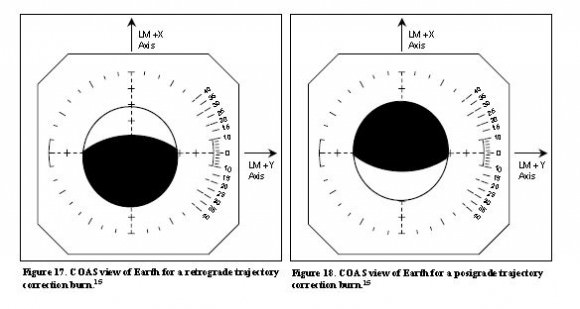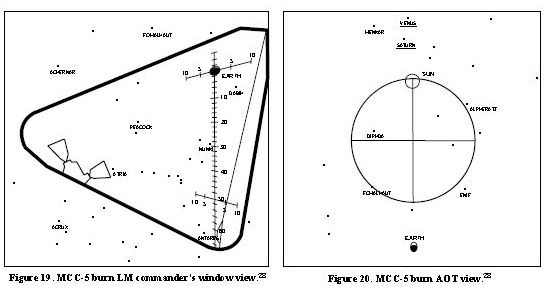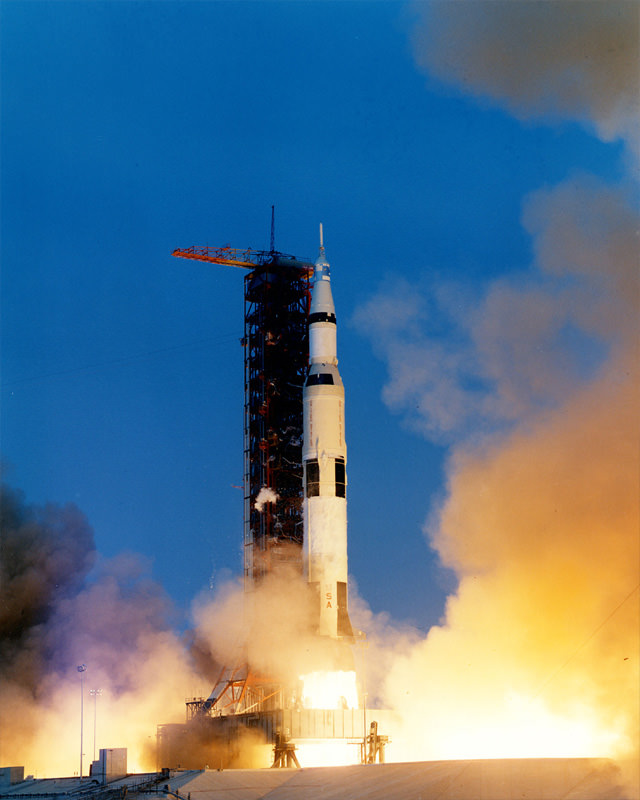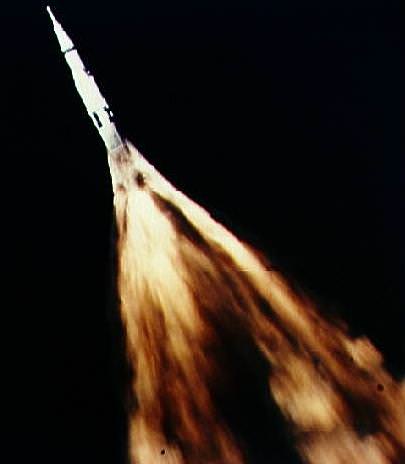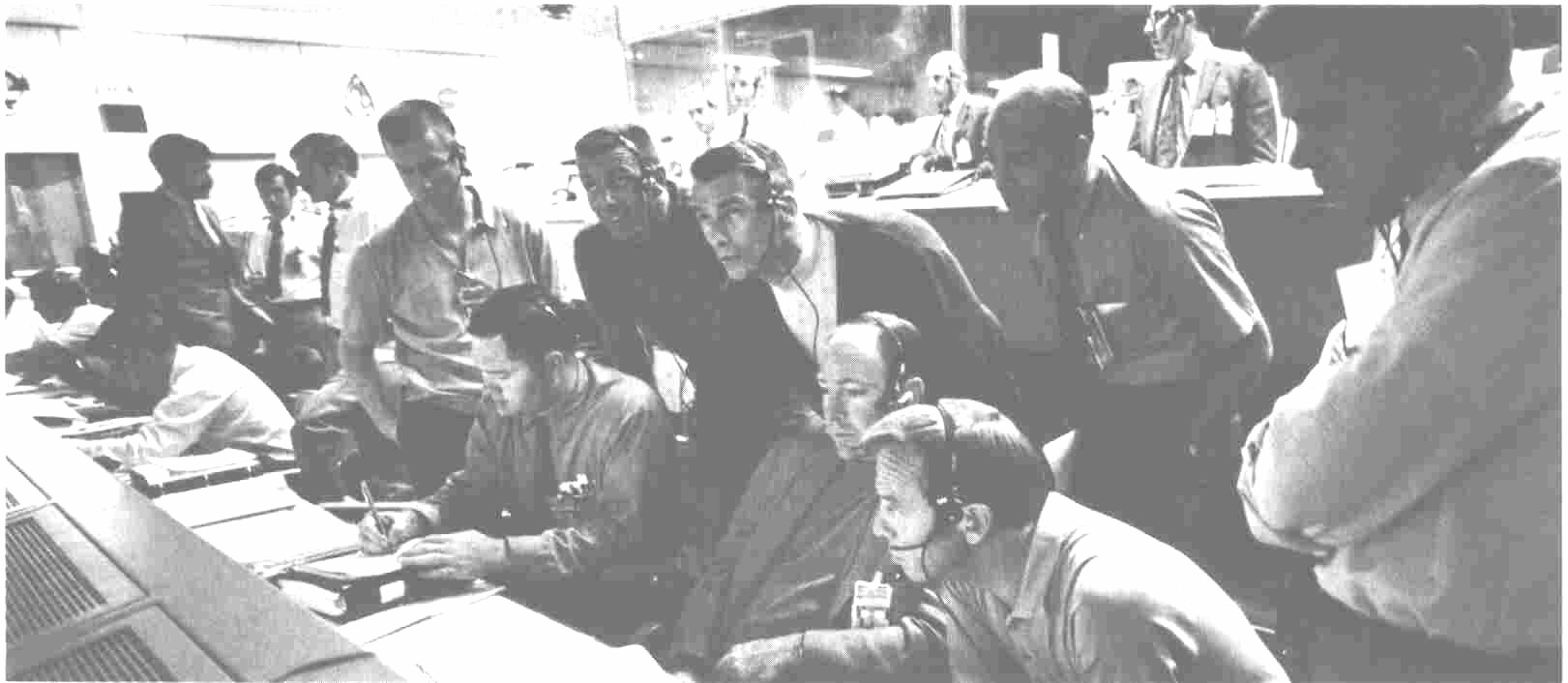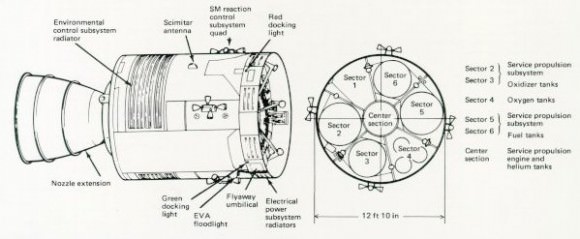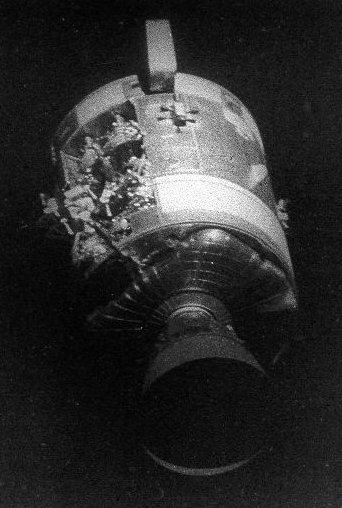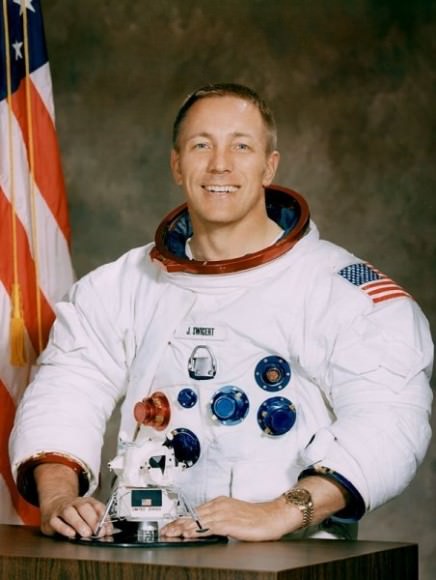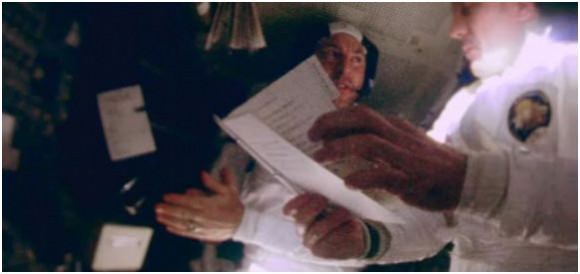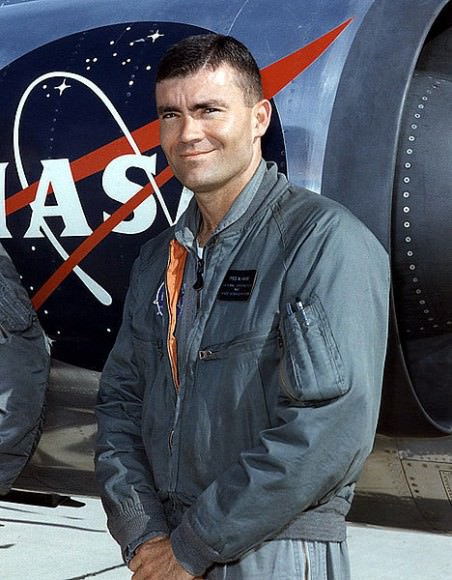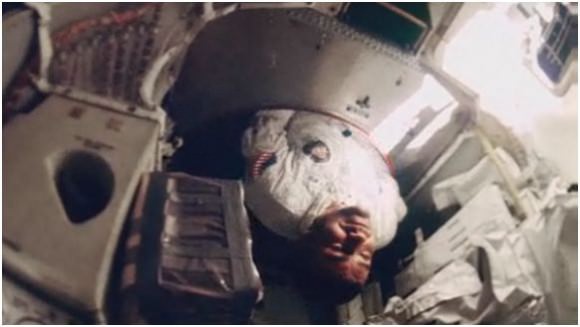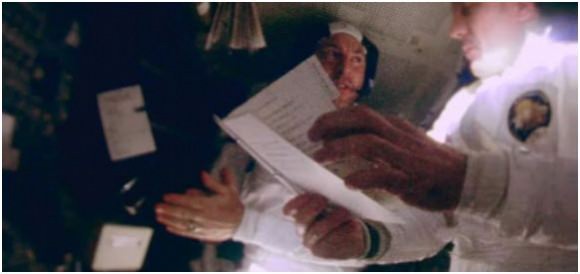Note: To celebrate the 40th anniversary of the Apollo 13 mission, for 13 days, Universe Today will feature “13 Things That Saved Apollo 13,” discussing different turning points of the mission with NASA engineer Jerry Woodfill.
It’s the handy man’s secret weapon, and has become a must-have item for astronauts, too. While duct tape alone didn’t save the Apollo 13 crew, it certainly would have been difficult for them to have survived without it. Even though the accident which crippled the ship took out the two main oxygen tanks in the Service Module, having enough oxygen really wasn’t an issue for the crew. A big problem was having too much carbon dioxide (CO2), which came from the astronauts’ own exhalations.
The Lunar Module had lithium hydroxide canisters to remove the CO2 for two men for two days, but on board were three men trying to survive in the LM lifeboat for four days. However, with a little ingenuity and duct tape, the Apollo Mission Operations Team was able to fit “a square peg in a round hole.”
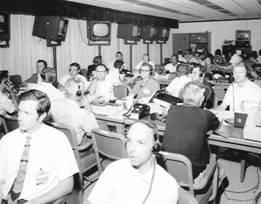
“Any of us in the Mission Evaluation Room (MER) might be called upon to assist in an Apollo 13 ‘solution,’” said Jerry Woodfill, who helped design and monitor the Apollo caution and warning systems. The MER was where the spacecraft systems engineers were stationed during a mission, and should a problem arise on any Apollo mission, the “MER-men” were called on for expert advice.
“Should an inexplicable glitch in an alarm occur, I might be consulted,” Woodfill said, “and I was – when the carbon dioxide levels began to threaten the astronauts’ lives, ringing alarms. However, to this day, I am proud that the Command Module’s alarm system was the first warning alerting Mission Control and Lovell’s crew to the life-threatening problem.”
The MER engineering team was led by Don Arabian. “His loud, challenging voice could carry the entire length of the Mission Evaluation Room,” Woodfill said. “Despite his fierce personality, he was a brilliant engineer. No forensic engineer working with any attorney had a greater ability of assessing a spacecraft mission anomaly than Don Arabian.”
Additionally, Woodfill said, Arabian was wholly unorthodox in his management approach. “He feared no man above or below his pay grade. He was honest almost to the point of embarrassment. He would not ‘sugar coat’ any situation Apollo 13 was dealing with as far as the press was concerned.”
Woodfill recalled how Arabian commanded the MER team from the “throne-like” center seat of a long table perpendicular to tables of engineers. “He was, perhaps 20 feet from my station as the Caution and Warning Apollo 13 Engineer. Don never intimidated me, though I had felt nervous about many of my superiors. Don had that same quality of leadership Gene Kranz possessed. He was fair with lower level workers and respected their knowledge.”
For that reason, Woodfill said he felt privileged rather than frightened when summoned to Arabian’s private office to discuss the threat to the lives of the Apollo 13 crew, the build-up of CO2 in the spacecraft.
Woodfill had worked with the environmental system engineers to establish an alarm level based on the percentage of CO2 in the cabin atmosphere. The idea was to use the warning system as an alert for changing the filters.
With the CO2 alarms ringing on Apollo 13, Woodfill met with Arabian. “As I recall there were three calibration curves, one for three different cabin pressures,” Woodfill said. “Arabian began to throw questions at me across his desk: ‘Is the alarm accurate…is the transducer working correctly…what about the calibration?'”
Woodfill had the information on the calibration curves with him, and together, he and Arabian carefully studied it based on the known cabin pressure, the voltage output from the CO2 transducer and the voltage level at which my warning electronics initiated the alarm.
“Yes, the warning system was telling the right story,” Woodfill said.
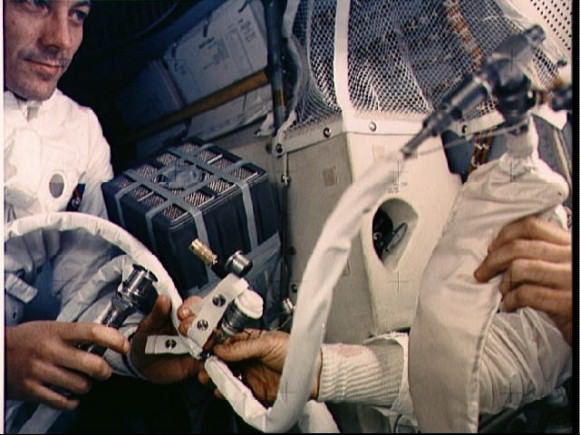
But there was a problem with the CO2 “scrubbers,” the lithium hydroxide canisters. The cabin air was fed continuously through environmental control equipment, and the lithium hydroxide reacted with the carbon dioxide and trapped it.
“There were but two round lithium hydroxide canisters in the LM, able to provide filtering for two men for two days,” said Woodfill. “With the trip back to Earth at least four days in length, and three men on board, the carbon dioxide content of the cabin air would rise to poisonous levels, and the crew would expire without a solution.”
Each canister had a life of approximately 24 hours with two men on board. Since there were now three men, that life would be somewhat shortened. The round filters were housed in two separate barrels in the lander. One barrel was plumbed into the cabin’s environmental control system, and the other barrel simply stowed the second cartridge. When the first filter was consumed, the crew simply interchanged the filters in the barrels.
“While there were plenty of filters in the Command Module, these were square and wouldn’t fit in the LM barrel,” Woodfill said. “Without some kind of unusual miracle of making a square peg fit into a round hole the crew would not survive.”

The experts in the MER had 24 hours to deal with the challenge and solve the problem. “My recollection of the threat,” said Woodfill, “besides the earlier meeting with Don Arabian, was Don’s voice bellowing from his throne in the mission evaluation room that Tuesday, ‘I need those guys to come up with an answer on the CO2 thing and do it fast!’ He was referring to the ‘tiger team’ led by Ed Smylie, the crew systems manager working the problem.”
Using only the type of equipment and tools the crew had on board –including plastic bags, cardboard, suit hoses, and duct tape — Smylie and his team conceived a configuration that just might work.
“The concept seemed to evolve as all looked on,” Woodfill said. “It was to attach a suit hose into a port which blew air through the hose into an astronaut’s space suit. If the space suit was eliminated and, instead, the output of the hose somehow attached to the square filter, perhaps, the crew could be saved. This, in effect, would bypass the barrel. The air blown through the filter by the suit fan would have no carbon dioxide as it reentered the cabin atmosphere.”
The biggest challenge was attaching the hose into a funnel-like device having a small round inlet hole for the suit hose and a much larger square outlet attached and surrounding the square filter. But the funnel would most likely leak. Added to that difficulty was the hose and plastic bags tended to collapse restricting the air flow through the filter.
“Then the thought came, ‘Use cardboard log book covers to support the plastic,” said Woodfill. “It worked! But more importantly, they had to figure out how the funnel could be fashioned to prevent leaking. Of course…the solution to every conceivable knotty problem has got to be duct tape! And so it was.”

Woodfill said that duct tape had been stowed on board every mission since early in the Gemini days.
The contraption that Smylie and his team came up with was checked out in the simulators, which worked, and then the team quickly radioed instructions to the crew, carefully leading them through about an hour’s worth of steps.
At a mission debrief, Jack Swigert noted, “At this point in time I think the partial pressure of CO2 was reading about 15 millimeters. We constructed two of these things and I think within an hour was down to 2 tenths.”
Woodfill watched his systems from the MER. “I saw the alarm light go out and it stayed out the rest of the mission.”
As Jim Lovell wrote in his book “Lost Moon, “The contraption wasn’t very handsome, but it worked.”
And it saved Apollo 13.
Next: Part 11: A Hollywood Movie
Earlier articles from the “13 Things That Saved Apollo 13” series:
Part 2: The Hatch That Wouldn’t Close
Part 3: Charlie Duke’s Measles
Part 4: Using the LM for Propulsion
Part 5: Unexplained Shutdown of the Saturn V Center Engine
Part 6: Navigating by Earth’s Terminator
Part 8: The Command Module Wasn’t Severed
Part 12: Lunar Orbit Rendezvous
Part 13: The Mission Operations Team
Also:
Your Questions about Apollo 13 Answered by Jerry Woodfill (Part 1)
More Reader Questions about Apollo 13 Answered by Jerry Woodfill (part 2)
Final Round of Apollo 13 Questions Answered by Jerry Woodfill (part 3)
Never Before Published Images of Apollo 13’s Recovery
Listen to an interview of Jerry Woodfill on the 365 Days of Astronomy podcast.

